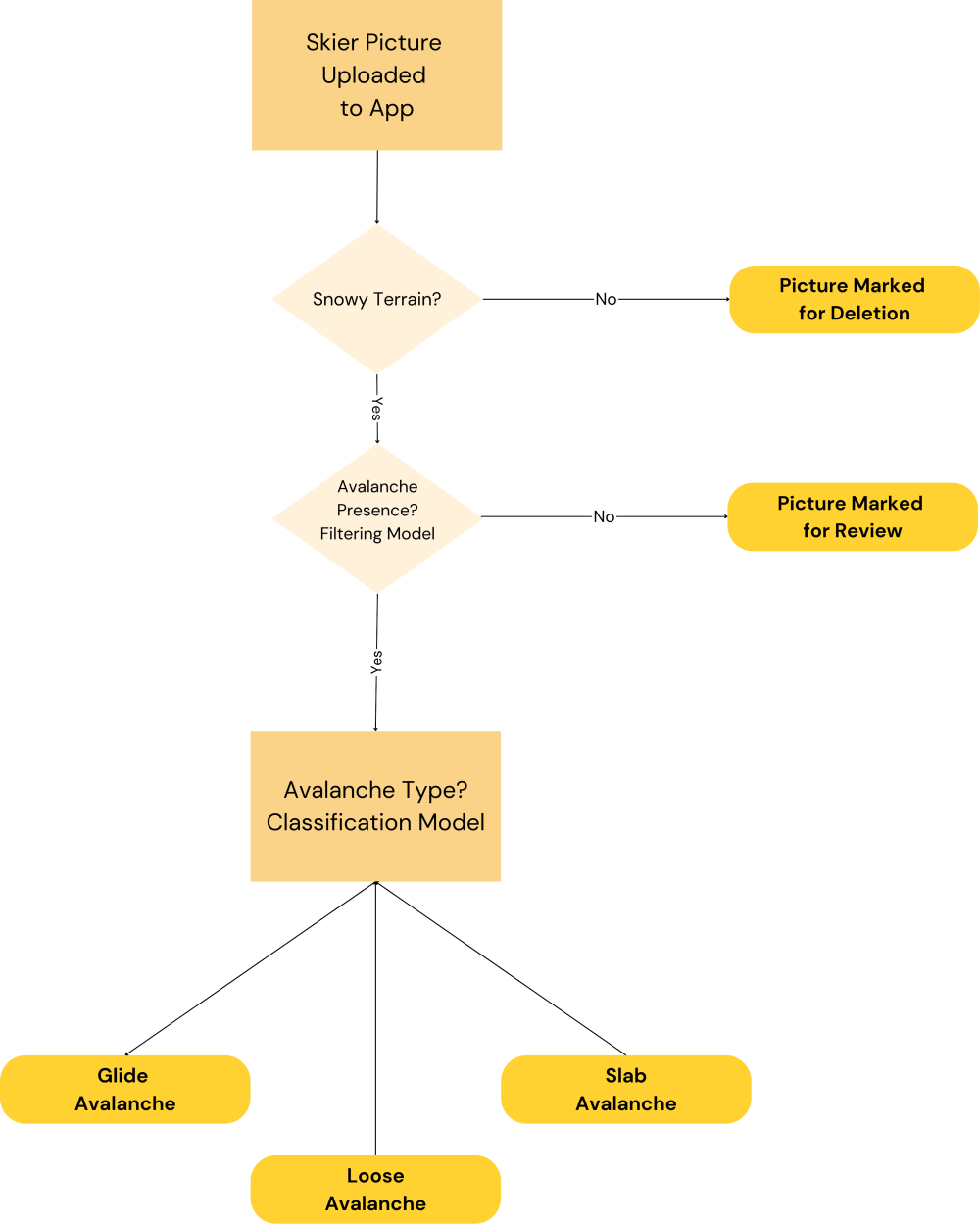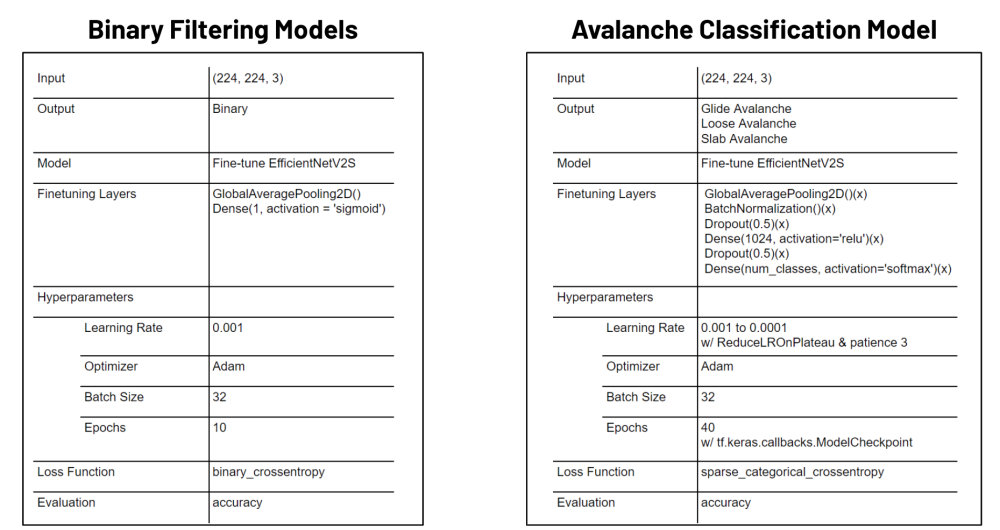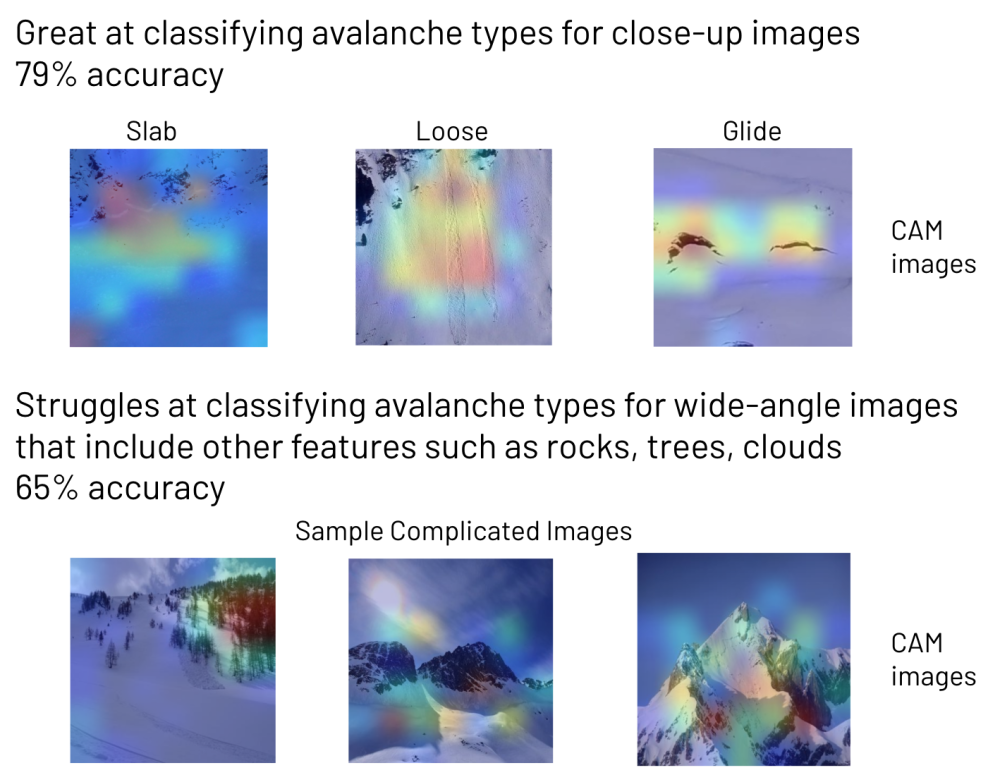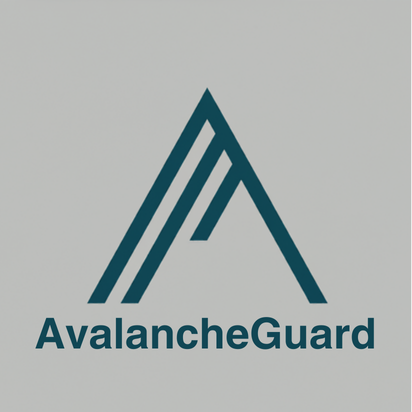AvalancheGuard
AI-powered Avalanche Observations
Avalanche forecasts save lives. They enable those who travel, live, work, or recreate in the backcountry to make informed decisions in snowy mountain environments.
Forecasters rely on weather reports, snowpit data, and avalanche event observations to assess daily avalanche risk. However, forecasters and avalanche center directors agree that more reports on when, where, and what types of avalanches people see are essential. Increased reporting would lead to more accurate, localized avalanche forecasts, enhancing public safety and decision-making for backcountry travelers.
Backcountry travelers say that they currently don’t contribute pictures to existing observation platforms because they are unsure how to caption them. They also don’t realize that their contributions could help keep everyone safe.
To address this need, we’ve developed AvalancheGuard, an app that allows recreational skiers, riders, snowmobilers, and anyone traveling through snowy mountains to easily upload pictures of any avalanche activity they see. Our app automatically captions pictures with the avalanche type, simplifying the observation submission process for backcountry travelers. These crowd-sourced observations are summarized on our platform, providing valuable data for forecasters to analyze when developing their avalanche risk forecasts.
Our solution
Our solution focuses on crowd-sourcing and labeling field observation data, complementing the weather and snowpack data that forecasters use to determine avalanche danger levels. We are solving the problems of the limited number of field observations, the quality of field observations, and the precious time spent extracting the most relevant information.
Dataset
We utilized three datasets to train and evaluate our models, including ImageNet and a Kaggle landscape dataset. This enabled us to develop a model specifically designed to filter out images that don’t depict snowy mountains.
The primary dataset we used was published by Fox et al. from the University of Innsbruck in Austria. It provides a robust foundation for avalanche detection research. It comprises 4,095 labeled avalanche images, categorized by type (Glide, Loose, Slab) or marked as No Avalanche. The accompanying paper, dataset, and code are available on GitHub at github.com/j-f-ox/avalanche-detection. This dataset is instrumental in training and validating our models to ensure accurate and reliable avalanche detection.
Types of Avalanches
- Glide: Slow-moving slides along the ground, often characterized by a visible glide crack.
- Loose: Areas where loose, unconsolidated snow is sliding down the slope, typically starting at a point and fanning out.
- Slab: Large, cohesive slabs of snow that have broken away, seen as a distinct, clean break in the snowpack.
Data Pre-Processing
To prepare the data for analysis, we perform several pre-processing steps to enhance the quality and relevance of the data.
Preprocessing Steps
To enhance the accuracy and reliability of our avalanche image dataset, we implemented several preprocessing steps:
- Crop close-up of avalanches from original wide-angle pictures.
- Resize all images to 224x224, maintaining consistency w/ many computer vision foundation models
- Balance Classes with undersampling
Models
Model Architecture
Three Cascaded Models successively take an input picture uploaded by a snow enthusiast and first filter out any pictures that are not a snowy mountain. Second, Filter out any pictures that don’t feature an avalanche. Third, Classify a valid picture of an avalanche into an avalanche type: glide, loose, or slab.
Overview
Our solution involves a multi-stage pipeline with three models, each designed for specific tasks in the process of avalanche detection and classification. All 3 models are fine-tuned on EfficientNetV2S. Differences in task complexity and nature (binary vs multi-class) drive differences in fine-tuning layers and parameters.
We landed on EfficientNetV2S fine-tuning, leveraging a common image classification transfer learning approach for our moderate dataset size. Feature extraction of colors and texture was insufficient due to image complexity Transformer-based approaches are state-of-the-art but difficult b/c of our small dataset Cleaning data, preprocessing, class balancing, fine-tuning layer params were also all tuned.
Filtering Models
The binary filtering models achieved high accuracy.
Classification Model
The classification model achieved 79% accuracy. It is great at classifying avalanches in close-ups. The images shown have class activation maps overlaid on them. For slab, the trend is a focus on the crown at the top of the avalanche. For loose, it looks like it’s more of a texture thing. For glide, it’s definitely looking for the patch of dirt at the top of the avalanche. This model struggles with wide-angle images where rocks and trees can be confused with patches of dirt or clouds can look a lot like snow.
Model Evaluation
We assessed our models using a range of metrics and analytical tools. Accuracy was employed during model training because the specific type of misclassification was not a primary concern. In addition to accuracy, we also considered precision, recall, and the F1-score, alongside an analysis of the confusion matrix. Our final classification model exhibits comparable precision and recall values across different classes. The model demonstrates the highest confidence in identifying glide avalanches, likely due to the distinctive dirt patch at the top, which serves as a clear identifier. There are occasional misclassifications between slab and loose avalanches; however, the overall accuracy remains high at nearly 80%. We utilized accuracy and loss curves to monitor potential overfitting and to inform adjustments to the learning rate and the number of training epochs. Additionally, we reviewed misclassified images along with overlaid class activation maps to gain insights into the model’s focus areas and to refine our training dataset.
Key Learnings
- Snow is complex! Models that work well on objects that are colorful or have clear boundaries or textures don’t work as well on snow. Avalanche paths don’t have clear boundaries. They can look similar to lighting variations or other types of disturbed snow like skier tracks. Patches of dirt, rock, groups of trees can also all look very similar so that the patch of dirt that gets detected w/ a glide avalanche can easily cause false positives in pictures of rocky mountains.
- Cascaded Models are modular, future-proof, reduce complexity, improve explainability. The architecture will allow us to add filtering models or a segmentation model for example in the future.
- Feature extraction, CNN-based, and Transformer-based models all have different advantages. CNN based EfficientNet finetuning ended up working well for our use case b/c of complexity & dataset size.
Key Contributions
- Avalanche Detection: With AvalancheGuard, we are able to automatically detect three types of snow avalanches.
- EfficientNetV2S Model for Avalanche Detection: With AvalancheGuard, we explored EfficientNetV2S, an architecture not currently explored for avalanche detection.
- Detection Application for Crowdsourced Images: With AvalancheGuard, we provide the community with a ready-to-use, easy, and fast application for avalanche detection.
Future Work
- Enhance the reach of our model by including a segmentation model capable of recognizing avalanches from far distances in side-angle images. Including the exploration of, for example, interactive segmentation.
- Improve the accuracy of our detection using crowdsourced images. This will enable us to cover more regions around the world.
- Integrate our solution with Intagram, reaching a maximum number of potential users.
Acknowledgements
We would like to extend a special thanks to everyone who has advised us and provided feedback throughout our capstone project. In particular, interviews with backcountry experts, avalanche researchers and enthusiasts both were critical to develop our product MVP and vision.
David Reichel, Executive Director at the Sierra Avalanche Center, for providing guidance, extensive feedback, and data to test our models.
Richard Bothwell, former Executive Director of AIARE (American Institute of Avalanche Research and Education), and current CFO (Chief Fun Officer), Owner and Lead Guide, Avalanche Educator at Outdoor Adventure Club for providing guidance, feedback, and an introduction to avalanche safety.
Jeffrey C, forecaster, for invaluable feedback and “day-in-the-life” explanations of a forecaster’s process.
David, Arnaud, Zara, backcountry skiers & friends who shared their experiences in the backcountry, their interactions with avalanche forecasts, their barriers to submitting observations, and wishes for an awesome reporting product.
Jaeyoung Lim from the Autonomous Avalanche Detection and Mapping At The Autonomous Systems Lab (ASL) at ETH Zurich and Elisabeth Hafner at the WSL Institute for Snow and Avalanche Research SLF who share invaluable insights into their avalanche research in Switzerland.
















